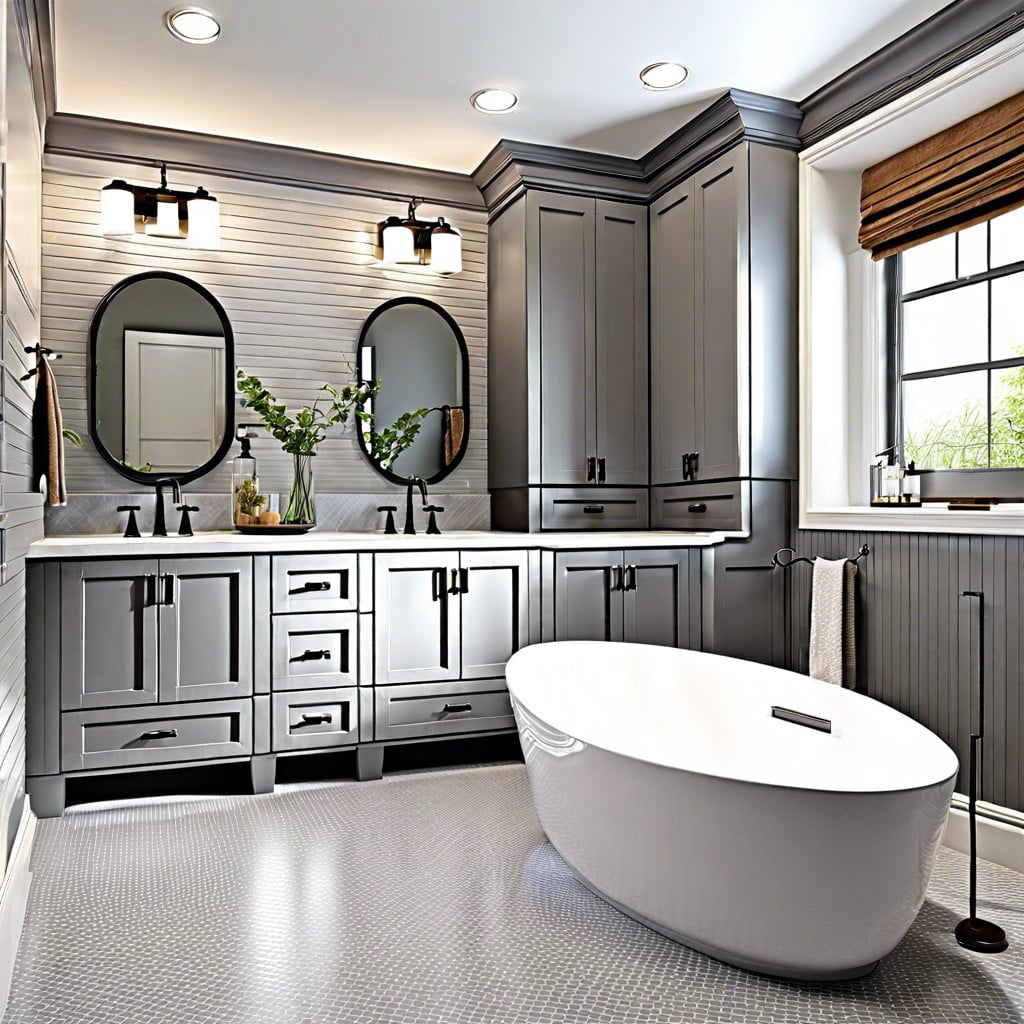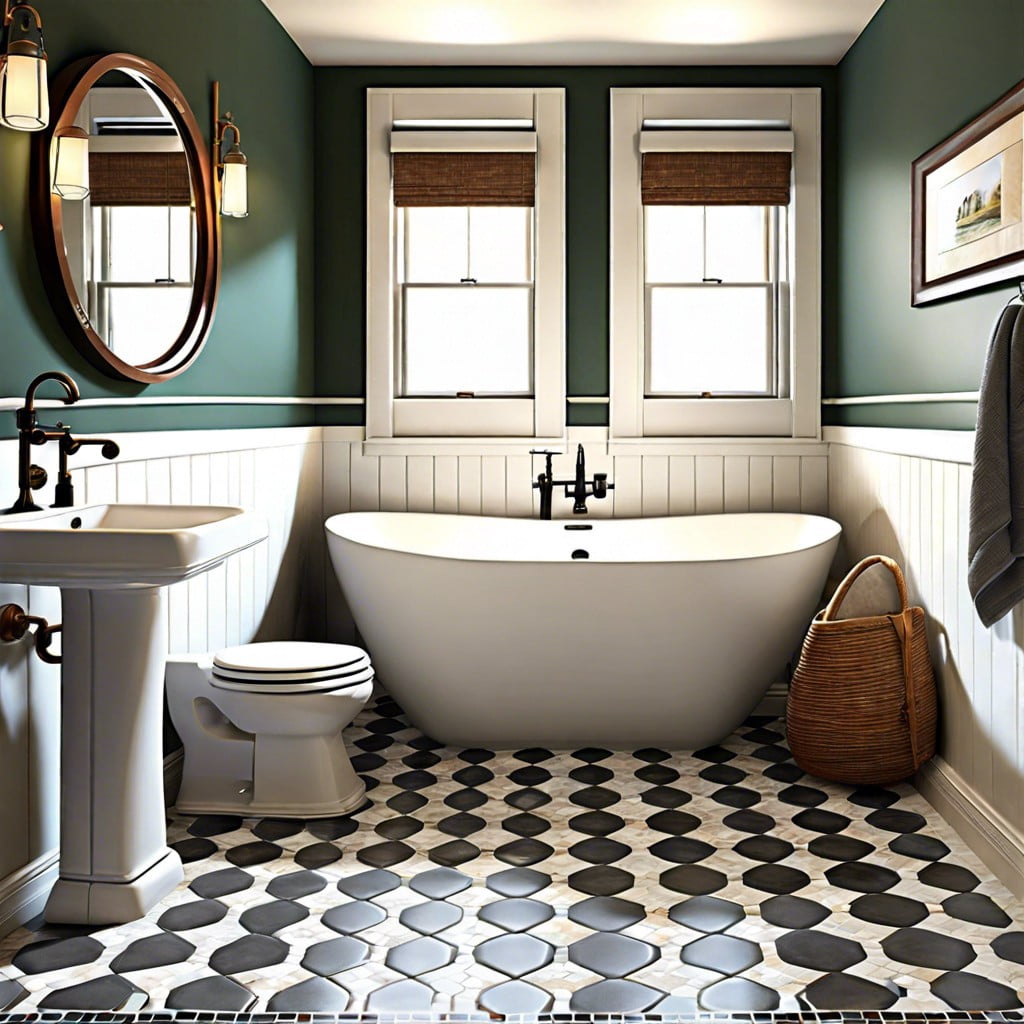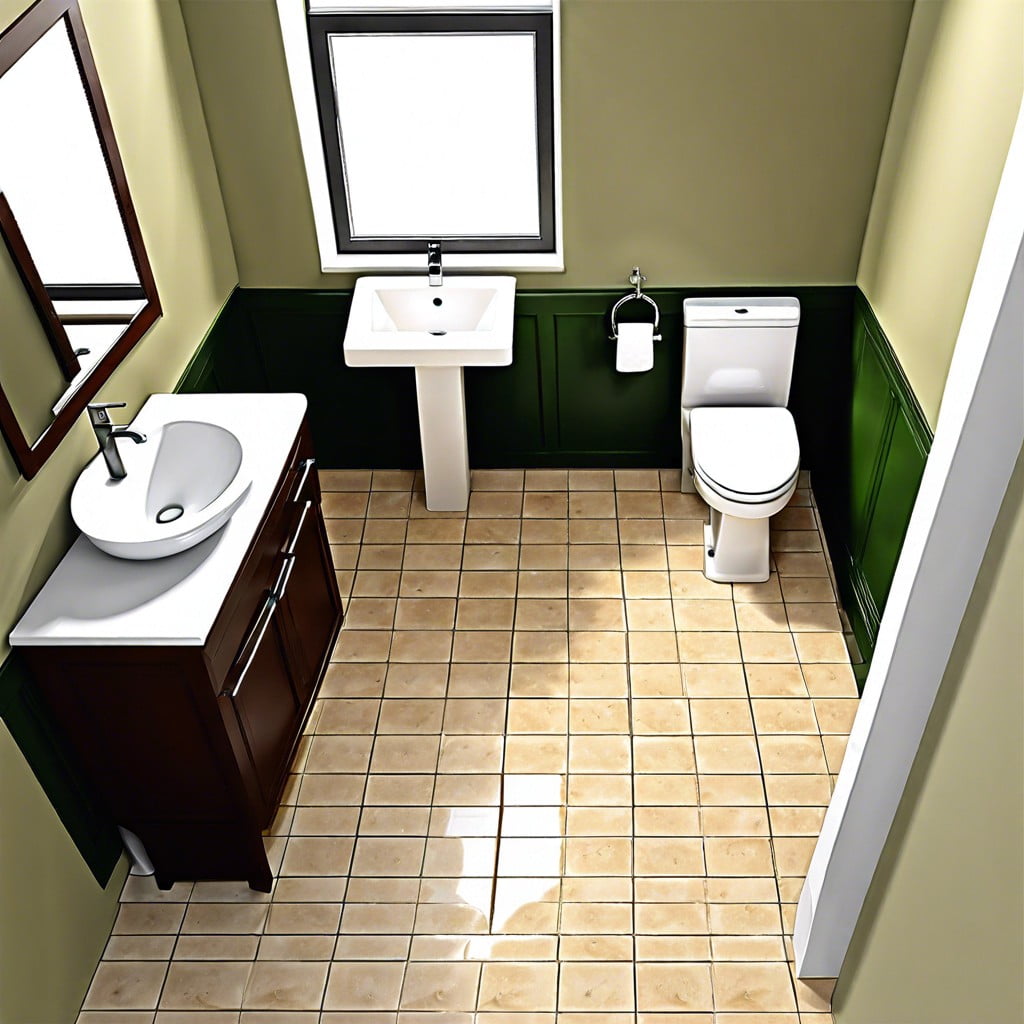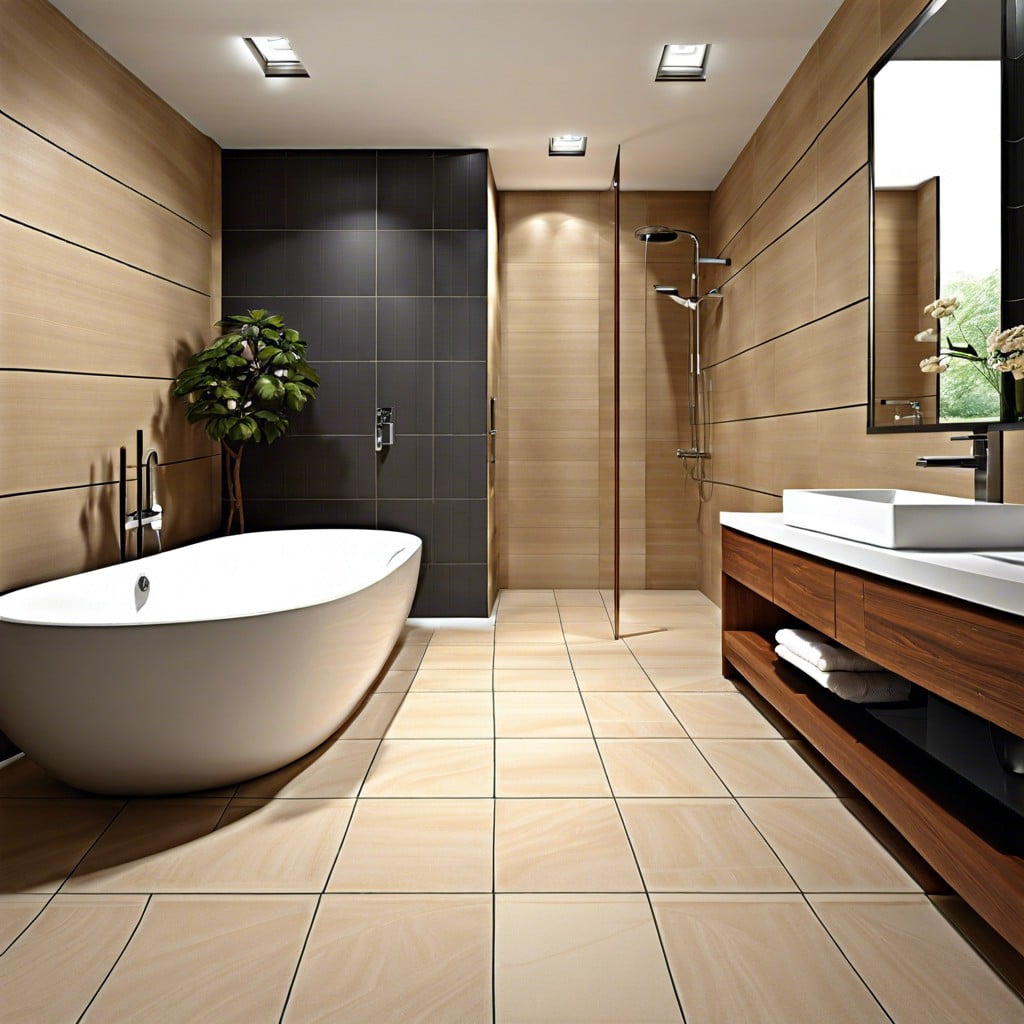Last updated on
Grasping the nuances of various tub styles will aid prospective buyers in making an informed decision that best suits their personal tastes and functional necessities in their bathroom space.
Key takeaways:
- Consider your intended use and practical details
- Measure your bathroom and consider space limitations
- Assess your water heater’s capacity for a larger tub
- Choose a bathtub material based on cost, durability, and design flexibility
- Types of bathtubs include alcove, freestanding, and walk-in
Questions to Ask Before Buying a Bathtub
Embarking on the journey of selecting a bathtub can be akin to charting the unknown. To simplify the quest, let’s anchor it down with these fundamental queries:
Firstly, consider your intended use. Is it a sanctuary for lengthy, luxurious soaks or a functional basin for brisk daily routines? This purpose will influence your choice significantly. Go beyond just thinking about soaking; envision practical details like ease of cleaning, frequency of use, and if children or pets will be splashing about too.
Space is another crucial factor. Measure the bathroom meticulously, including doorways. Remember, the grandest tub is futile if it can’t clear your front door, let alone fit in its designated spot. Do you require a compact solution or can your bathroom house a more palatial option?
Lastly, assess your water heater’s capacity. A larger tub is tempting, but it’s no good if your water heater can’t provide enough hot water for a full bath. Otherwise, your dream tub becomes the stuff of tepid, half-filled nightmares.
By nurturing these points, your path forward will be clear, laying the foundation for a decision that fits both your desires and practical needs.
How Do You Plan to Use Your Tub?
Envision your routine: will this tub serve as a daily spot for scrubbing up, or a sanctuary for weekend relaxation? Frequency and function guide size, comfort features, and durability requirements.
Consider the soaking factor versus shower functionality. Some prefer a tub they can sink into, while others may prioritize a combo for space and efficiency, especially in a home with a single bathroom.
Don’t forget the bubble test. If unwinding in a sea of suds is your goal, ensure the tub’s dimensions accommodate your height and preferred lounging position comfortably without contorting like a pretzel.
Are you planning for accessibility long-term? Features like low thresholds and built-in seats are more than mere luxuries; they’re necessities for aging in place or for those with limited mobility.
Lastly, think about the future resale aspect. Even if you’re not a bath person, a tub can be a major selling point for families or bath enthusiasts.
By focusing on the intended use, you not only hone in on the ideal type but also invest in a bathtub that suits your lifestyle.
How Much Space Do You Have?
Maximizing your bathroom’s layout demands precise measurements. Every inch counts, particularly in more compact homes. Start by considering the clearance for bathroom doors and cabinetry. A smaller alcove setting may only fit a traditional-sized tub, while a larger space could accommodate a luxurious freestanding piece. Remember to account for installation access and future repairs as well. Professional advice can be invaluable to make the most out of the space you have, ensuring that your new bathtub enhances your bathroom, rather than overwhelming it.
Can Your Water Heater Handle the Task?
Understanding the capacity of your water heater is crucial when selecting a bathtub. If your dream tub is a large soaker or whirlpool, your existing water heater may struggle to fill it with adequately hot water.
Here’s the deal: the typical bath requires about 25-45 gallons of water, and the average water heater tank holds 40-60 gallons. If you go for a larger tub, consider a water heater with a capacity of at least 50% of the tub’s volume. Alternatively, opt for a tankless water heater for endless hot water.
Remember to consult a professional to ensure that your water heater can meet the demands of your new bathtub without leaving you in the cold.
Bathtub Materials to Consider
When deciding on a bathtub, the material is a real game-changer. Fiberglass is the wallet-friendly pick and a champion of quick installations, yet it doesn’t boast the longevity of its peers. If you’re on a tight budget, it’s a decent stopgap, but don’t expect a lifetime of luxe soaks.
Porcelain on steel is the middle child with a tougher skin, resisting chips and scratches more assertively than fiberglass. Its classic gleam is a nod to traditional aesthetics, making it a fit for many bathroom styles. Plus, it offers a compromise between durability and cost.
Acrylic tubs are the strong silent type; their color runs deep, thwarting superficial damage and retaining their luster over many moons. They’re the choice for long-term relationships with your bathroom, capable of assuming a wide range of vivacious shapes for the design-driven bather.
The bottom line is that your choice hinges on your priorities: cost, durability, and design flexibility. Each material whispers a different promise to your bathroom sanctuary – listen closely to their pitches and decide which one aligns with your bath-time reveries.
Fiberglass
Lightweight, cost-effective, and a staple in the budget-friendly bathroom remodels, fiberglass offers a practical solution for many homeowners. Its creation process, involving woven glass fibers and coated with resin, makes it one of the easier tub materials to maneuver and install, especially where space and access are tight.
While its initial charm is undeniable, it’s worth noting that fiberglass often has a shorter lifespan compared to its cast iron or acrylic cousins. Prone to scratching and less resistant to wear and tear, diligence in maintenance is key. Additionally, it’s less insulating, which might lead to quicker heat loss. However, for those seeking a quick solution on a tight budget, fiberglass may just hit the sweet spot.
Porcelain On Steel
When it comes to combining durability with a classic aesthetic, porcelain on steel is a formidable choice. Constructed from a thin steel base coated in a layer of fired porcelain, it’s designed to last. The glossy finish isn’t just about good looks—it’s also a pro at resisting scratches. This makes cleaning less of a chore and helps keep that new-tub sheen for years.
Thermal retention is another plus, ensuring a warm bath stays just that. However, the weight and rigidity of the material require a solid foundation, so double-check your bathroom’s structural support. Keep in mind, the surface can chip if hit hard enough, revealing the steel beneath, which could rust over time. For those seeking enduring simplicity, this might be your match.
Acrylic
Opting for an acrylic tub offers a wealth of benefits for those looking to combine durability with aesthetic appeal. Acrylic is renowned for its resilience against cracking and chipping, a feature particularly attractive in a busy household. Additionally, the non-porous nature of this material means it’s resistant to mold and mildew, an essential factor for maintaining a pristine bathroom environment.
Another convincing perk is its heat-retention properties, ensuring that your long soaks are just that—long and warm. Its lightweight quality eases installation woes, especially in homes where a hefty cast iron tub might not be feasible due to structural limitations.
While acrylic bathtubs might encounter some wear over time, showing scratches more readily than their porcelain counterparts, these minor grievances often can be easily remedied with a bit of polish. Plus, the wide range of shapes and sizes available makes an acrylic tub a versatile choice, adaptable to both classic and contemporary bathroom designs.
Types of Bathtubs and Installations
Alcove bathtubs, snugly fit between three walls, are prime for shower-over-tub arrangements, saving precious bathroom real estate. Ideal for tight quarters, they’re the workhorses of small bathrooms.
Freestanding bathtubs, the centerpieces of luxury, demand space and attention. Their versatility in placement makes them a favorite for expansive, design-forward bathrooms. Think beyond the classic clawfoot to modern soaking tubs that double as sculptural art.
Walk-in bathtubs, with their watertight doors, prioritize accessibility and safety. Tailor-made for those with mobility challenges, they often feature built-in seats and grab bars. It’s about independence without compromising on style or comfort.
Alcove Bathtubs
Perfectly nestled between three walls, these tubs are the quintessential space-savers, offering a pragmatic design for the no-nonsense bather. Ideal for those with limited bathroom real estate, you often find them paired with a shower for a two-in-one functionality that is both practical and economical.
While customization options might be limited due to their standard sizes, the alcove’s timeless appeal lies in its simplicity and ease of installation. For a renovation where space and budget are at a premium, the humble alcove style is hard to beat, proving efficiency doesn’t have to forsake comfort.
FAQ
What type of bathtub material is best?
In my opinion, cast iron bathtubs, famed for their remarkable durability and resistance to damage, make the best choice in bathtub material.
What is the best type of bath to buy?
In terms of durability and quality, my recommendation leans towards enamelled steel baths due to their scratch resistance and long-lasting natures, however, if comfort and warmth are prioritized, then acrylic baths with a minimum thickness of 8mm make a fine choice.
What bathtubs don t crack?
In the quest for a bathtub that will not crack, acrylic material strikes an ideal balance between cost, durability, and weight.
What type of tub is easiest to clean?
In my opinion, acrylic tubs, particularly those from leading brands like Jacuzzi Bath Remodel, are the most effortless to clean.
Which bathtub shapes are most comfortable for extended soaks?
In my view, freestanding and clawfoot bathtubs offer the most comfort for long soaking periods due to their spacious form and deep basins.
How does the installation process differ among various tub materials?
The installation process differs among various tub materials mainly in terms of weight and level of complexity, with heavier materials like cast iron requiring more support and potentially professional installation, while lighter materials like acrylic and fiberglass are considerably easier to install, typically a more DIY-friendly choice.
What are efficient ways to maintain the gloss finish on a bathtub?
Efficient ways to maintain the gloss finish on a bathtub include regular gentle cleanings with non-abrasive, pH neutral cleaning agents and careful use to avoid scratches and dents.
Recap




